
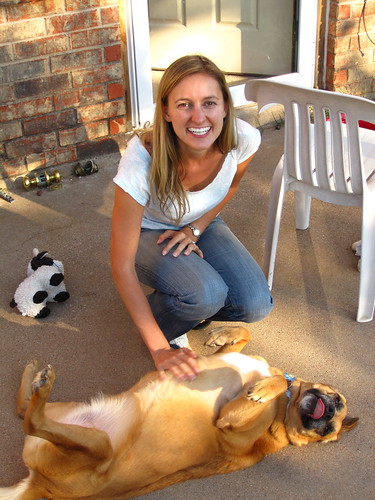
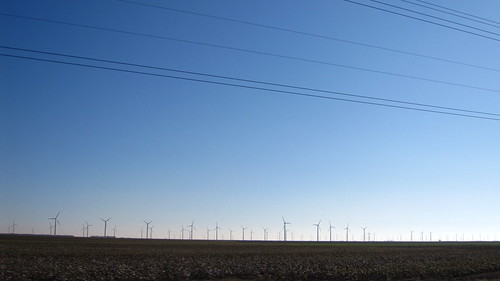
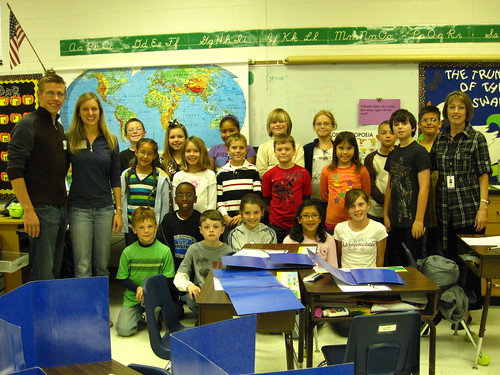

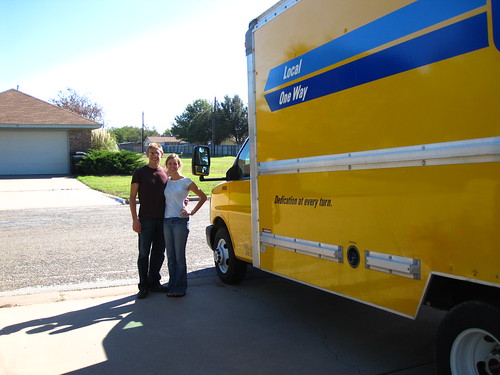
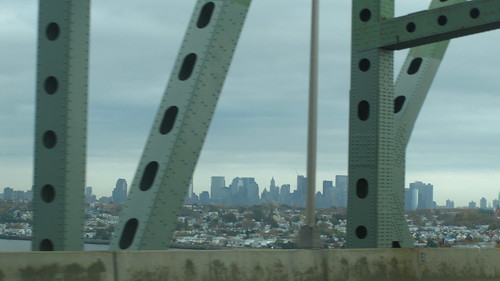
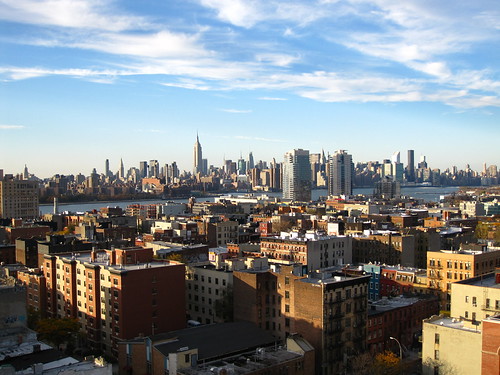
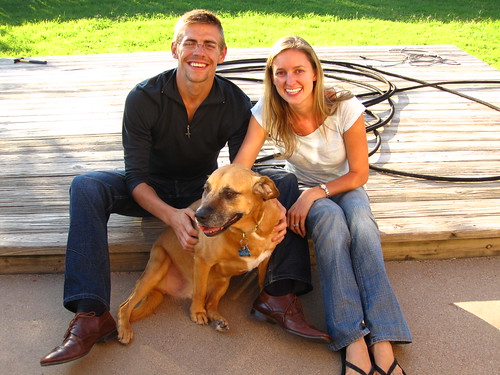









Some fellow passengers:

Unfortunately at some point in the night we were treated to the most authentic South American bus journey experience of all and had our laptop and shiny leatherman knife stolen from our bags. We were awake the whole time and realized what had happened quite quickly (despite the theives replacing the laptop with a bottle of water in its case!), but with no help at all from the bus drivers there was very little we could do. Apart, of course, from shouting a lot in broken Spanish and standing in front of the bus until the driver sulkily agreed to call the police. After a long detour to the station and an hour spent watching a policeman write out a full sheet of A4´s worth of handwritten report we finally hit the road again but did not reach Cusco until 3.00a.m. Given we had a train ticket from a station (that was itself a taxi ride from town) at 7.00a.m. we very nearly went straight to the station but the freezing Andean night convinced us to find a hostel where we spent two and a half hours dreaming of elaborate and gory punishments for laptop thieves.
With a new morning came a fresh perspective and while still angry we were also incredibly relieved that our passports and glasses hadn´t gone with the laptop. Our friends Andy and Tara (see the link on the right) have recently been through the nightmare of having their passports stolen mid-trip and with their experience in mind we had to admit things could have been much worse.
The "Machu Picchu experience" was to prove the slickest operation either of us had seen in South America and that began with the Peru Rail train to Aguas Calientes a.k.a. Machu Picchu Pueblo. Punctual and clean, the train wound its way through the heart of the Incan Sacred Valley for three spectacular hours before we pulled into our destination and were immediately swept off to a decent hostel. The tiny village of Aguas Calientes straddles two rivers and the only motorized transport is the shuttle buses which run people up to Machu Picchu itself. While it´s dominated by restaurants and a tacky trinket market you can´t spend much time in South America without getting good at ignoring those and the mountain setting more than made up for any cultural shortcomings.
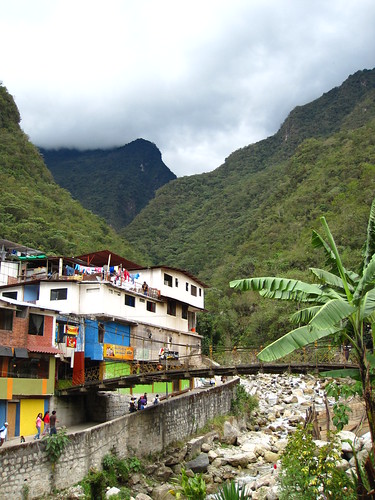
The next day was to be the grand finale of the trip and something we had both been looking forward to for months - our trip to the ´lost Incan city´of Machu Picchu. There are two ways to reach the site itself from Aguas Calientes: you can spend $7 on an 8km shuttle bus ride or get up early and yomp up a dizzyingly steep staircase through the jungle. We obviously chose b). and started our hike by head-torch at 4a.m.! As soon as we left the town we were treated to a amazingly clear starlit night spoilt only by the intimidating crocodiles of headtorches winding their way up the mountain ahead of us. Given how well-known the trek is I was amazed at how physically challenging it was and we wore out every one of the extra red blood cells we´d developed gasping our way around Puno.
This is the bus route - the trail cuts up the center of each switchback:
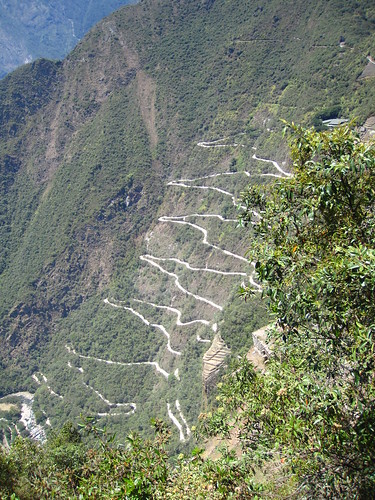
Megan celebrating our eventual arrival with a new friend at around 5.15a.m.
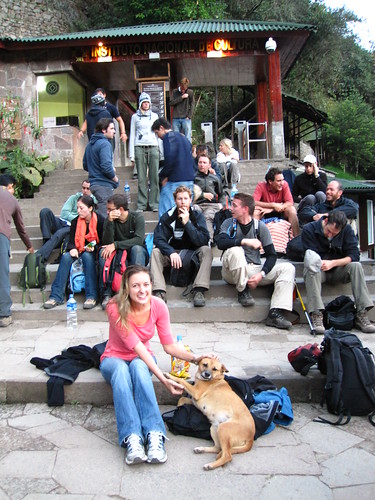
When the gates opened at 6a.m. we immediately climbed a little further to reach the hut from which you get the classic postcard view. The reward for arriving so early, assuming the weather is kind, is that you get to see the ruins slowly illuminated by the sun rising over the jungle coated mountains to the East. The still empty site is gradually flooded with deep shadows and the Eastern side of the ridge is soon basking in golden sunshine before the night mists have burnt away from the West. As has happened a couple of times already on this trip this is the point where words really begin to fail me. There is simply something magical in the combination of the ruins and their setting which seems to resonate deeply with everyone who experiences it and which left us grinning like idiots.
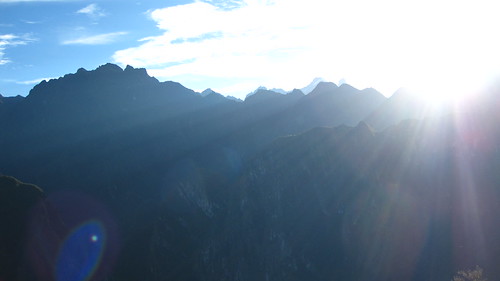
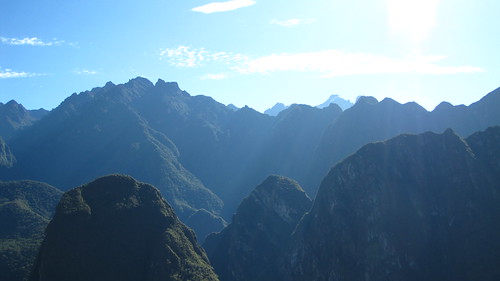


We spent the next couple of hours exploring the ruins and taking hundreds of photos of the temples, astronomical observatories and agricultural terraces which make up the citadel. While archaeologists now know a huge amount about the ruins themselves, exactly when or why they were built remains a mystery. We are currently reading "The Last Days of the Incas" by Kim MacQuarie which supports the theory that they were a form of royal retreat akin to a sixteenth century Camp David. What seems certain however is that the conquistadores never knew Machu Picchu existed and we could only wonder what it must have felt like to ´discover´the city in 1911.
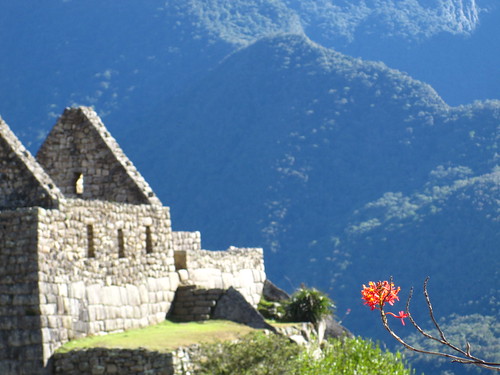

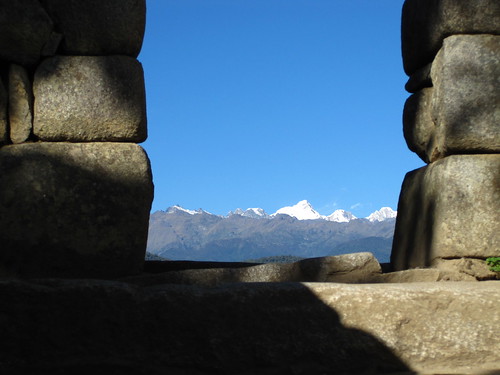
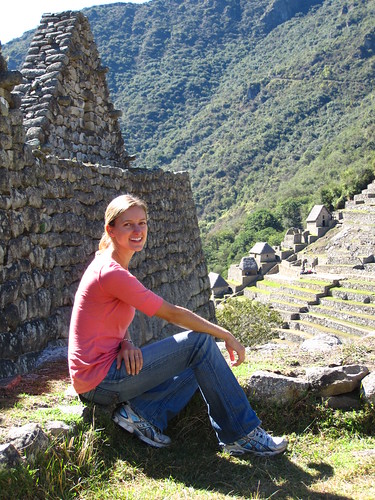
The second part of our prize for getting up so early was that we were one of the first 400 people to arrive and were therefore allowed to climb Huayna Picchu - the seemingly vertical mountain which rises up behind the ruins in the photos above. If the morning´s climb was tough, this was another level entirely. I started off marvelling that back home the authorities would have had to invest in more handrails and probably made us sign a disclaimer but by the time we scrambled to the top we both agreed there is no way on earth anyone would be allowed with a mile of this mountain were it in the US without crampons, ropes and ideally a parachute. Several sections were more like stone ladders than a trail and it is no exaggeration to say that a simple slip could have been fatal along most of the route. The upside, of course, was even more photo opportunities.
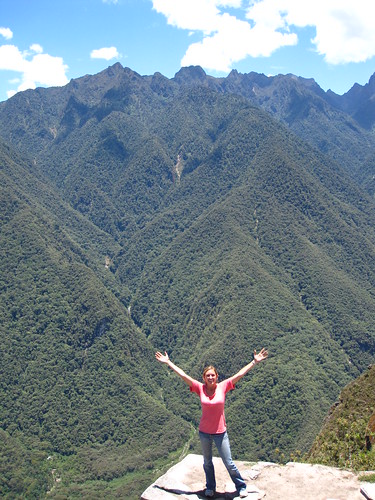
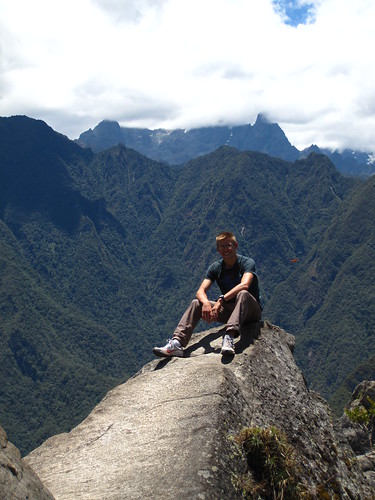
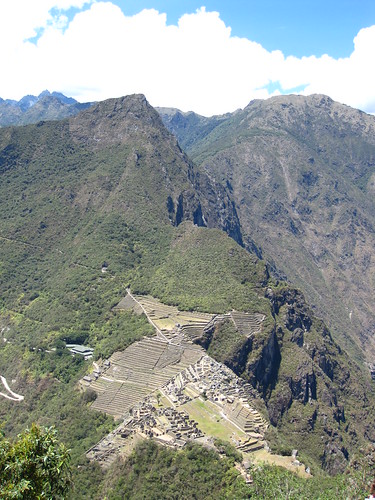
After rallying ourself with a nutritious picnic of tinned tuna and chocolate biscusits we trudged back down to Aguas Calientes, bribed our hostel owner into letting us shower and headed back to the train. In order to keep to our increasingly tight schedule we had been ´forced´to spring for the luxurious Hiram Bircham train back up the Valley which was a marked improvement on the Backpacker coach on which we´d arrived. This being Peru however luxury = entertainment so no sooner had we settled in to read our books two jesters appeared followed by an Alpaca Wool fashion show all set to pounding techno music. Yay. From the train station we took a taxi for a smooth 80km back to Cusco and 19 hours after waking up finally, finally slept.
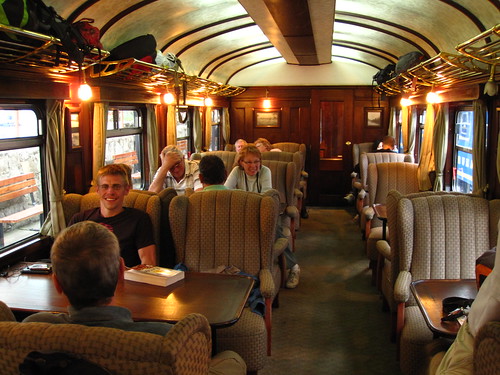
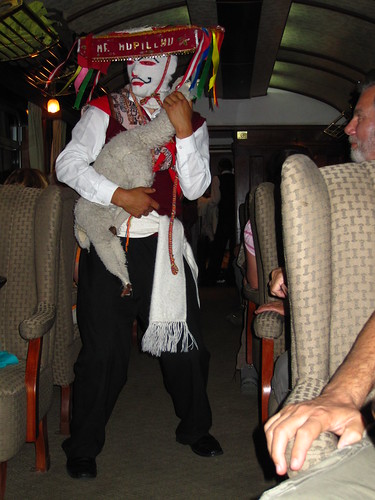
As we knew would be the case we can´t help but think of our last few days in Peru as a chance to finish shopping, eat well, keep clean and not get anything else stolen. Cusco is the former center of the Incan empire - the city from which they launched the campaigns which captured huge swathes of South America in 90 years. It is also the city from which the Spanish conquered that new empire and in which all 200 of them were beseiged by their former ally Manco Inca and hundreds of thousands of his warriors in the 1530s. As you would imagine it is filled with incredible buildings and ruins and the sense of history is palpable but we are shamelessly limiting ourselves to sights that are cheap and no more than a short stroll from the pleasent Plaza de Armas and the reliable comforts of the town´s only McDonalds - after six months we just don´t care.
Incan stone walls form the foundations of many of the town center buildings:
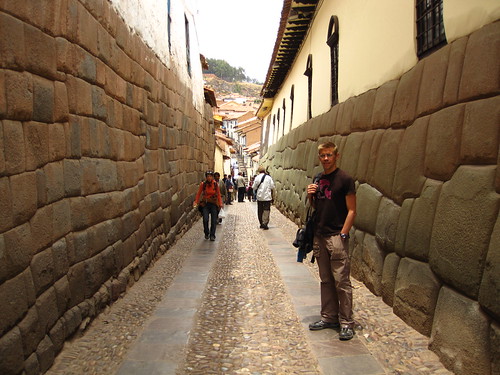
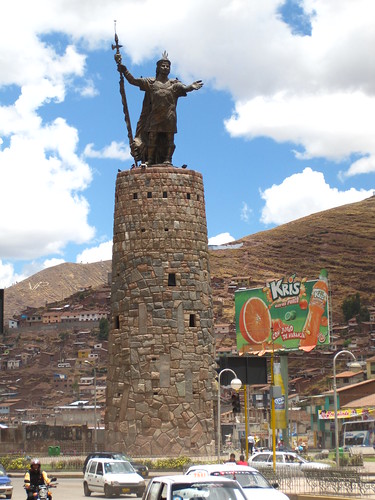
Two sights which made the cut were the town cathedral (featuring an enormous depiction of the last supper (menu: guinea pig)), and the Saqsaywaman complex. This Incan fort, built on one of the hills surrounding the town, was the base from which Manco Inca had directed the aforementioned rebellion. The seige of Cusco was eventually broken when a desperate band of 30(!) Spanish cavalry broke out of town and rode in search of the Incan emperor, storming the walls visible in the photo below, forcing the emperor to retreat to Ollytatambo and demoralizing his massed armies.
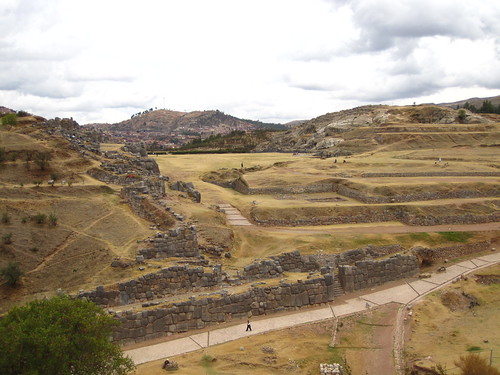
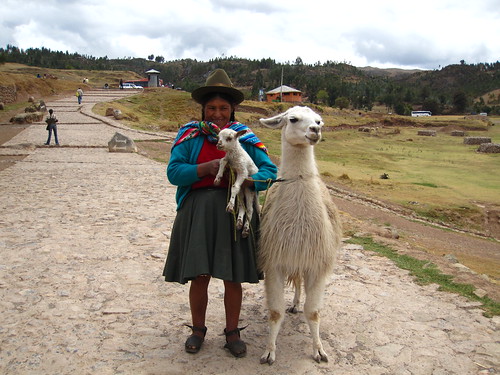
Nearby was Cusco´s version of Rio´s Cristo Redemptor. Smaller and less elegantly proportioned than Brazil´s version, when floodlit at night he looks a lot like Casper the friendly ghost but still has spectacular views of town.
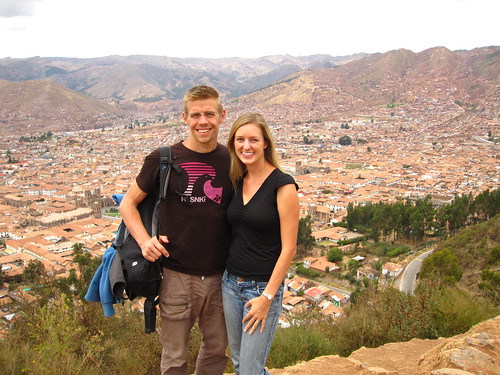
The Plaza De armas by night (Casper is top right)

If you´ve made it through this marathon post you´ll probably be eager to know when we plan on finishing this blog. Well the good news is that after 22 hours on a bus (6 movies, one dvd of Bollywood hits and one of Peruvian folkloric music) we are currently sat in Lima awaiting our flight back to the good ole USA. The bad news is that in an attempt to put off the inevitable we are planning to count our drive back to NYC itself so will probably have one or two updates yet. Stay tuned!
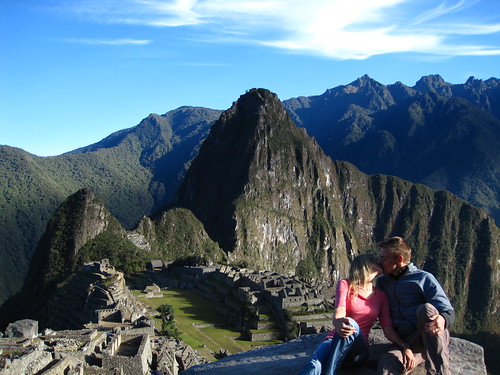
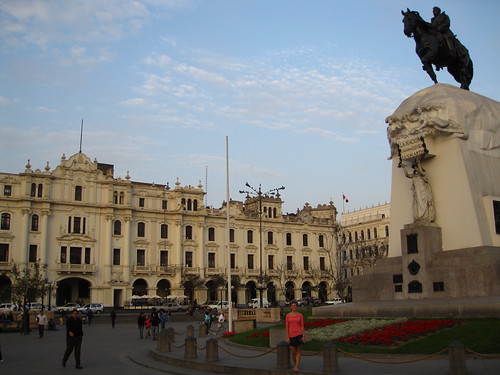

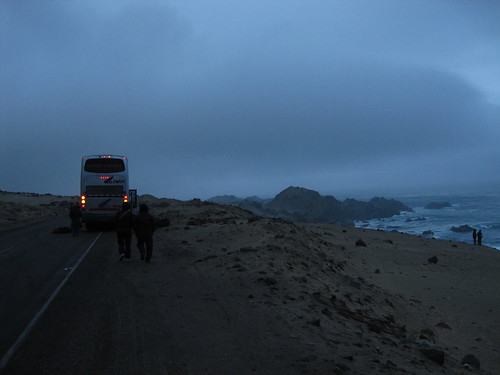
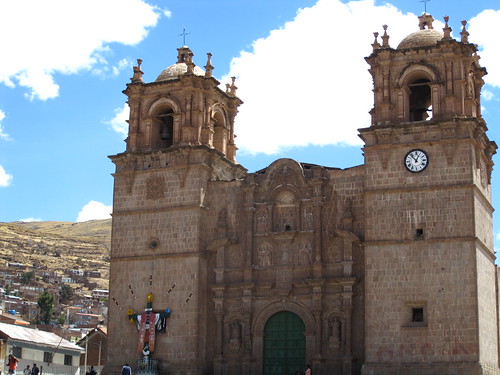
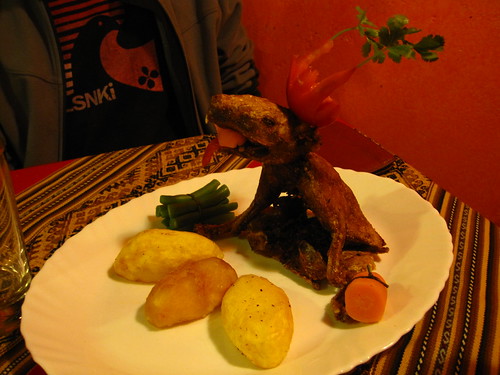
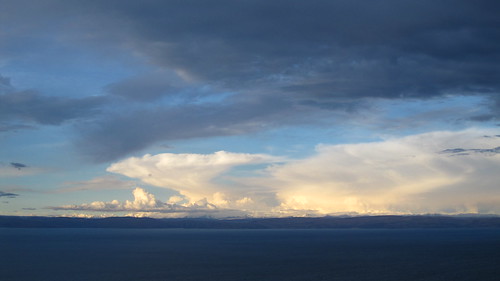
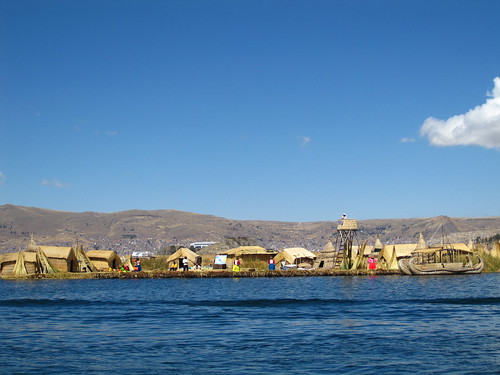
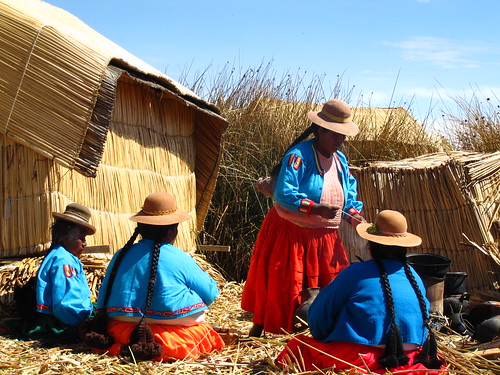

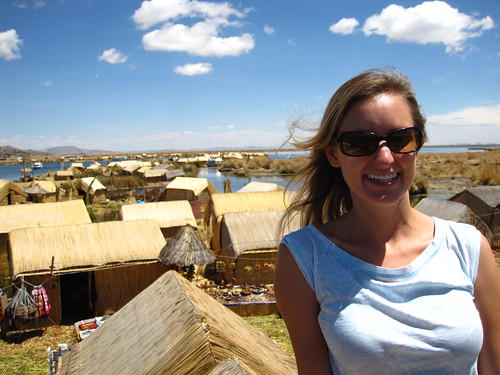
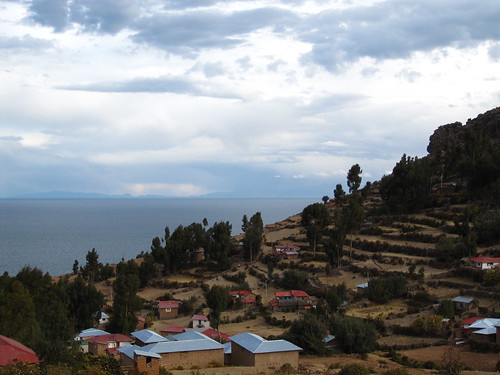
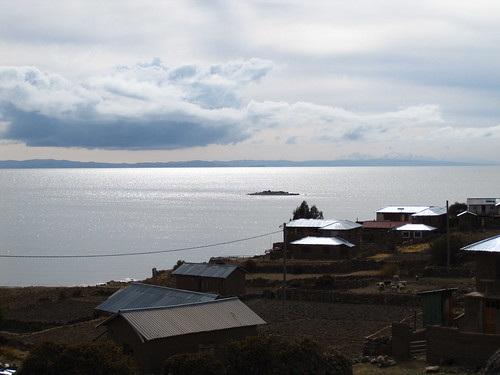
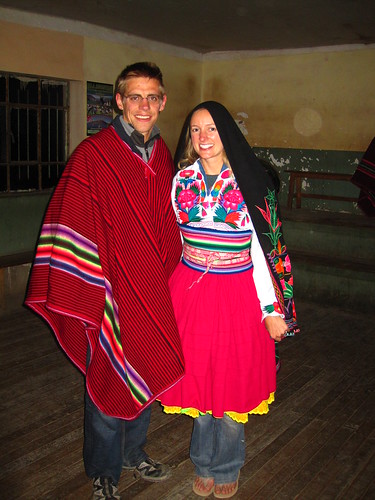
The next morning, after saying our goodbyes to our host, we headed over to the other large island, Taquile (where they do not serve tequila, despite the obvious marketing connection). This island was a bit more modern and tourist-friendly than Amantani, so we didn´t stay too long - we basically hiked to the top, had a delicious fresh trout lunch, hiked down, and motored back to Puno.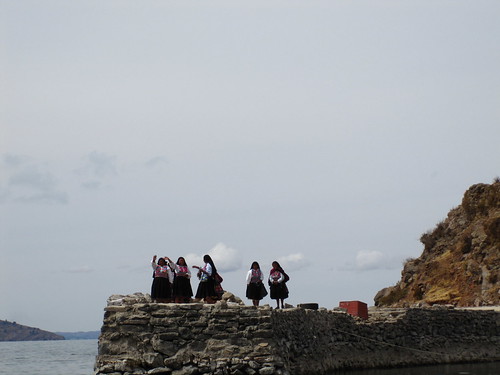
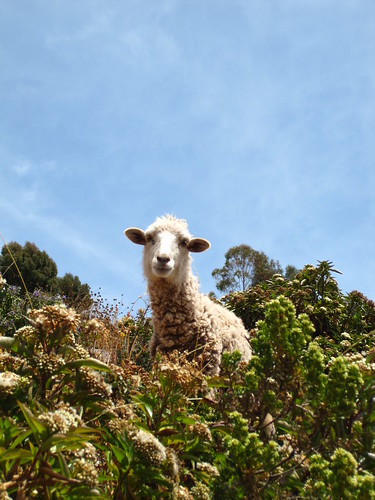
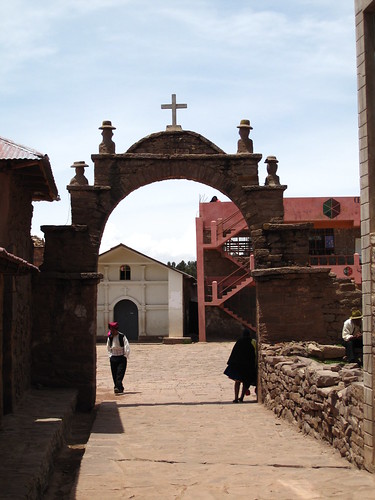
We are now about to board our penultimate long distance bus, this time to Cuzco, before the unthinkable happens - our return to the USA! There is still more to see and do, though, so we´re trying not to dwell on our return just yet.
www.flickr.com
|